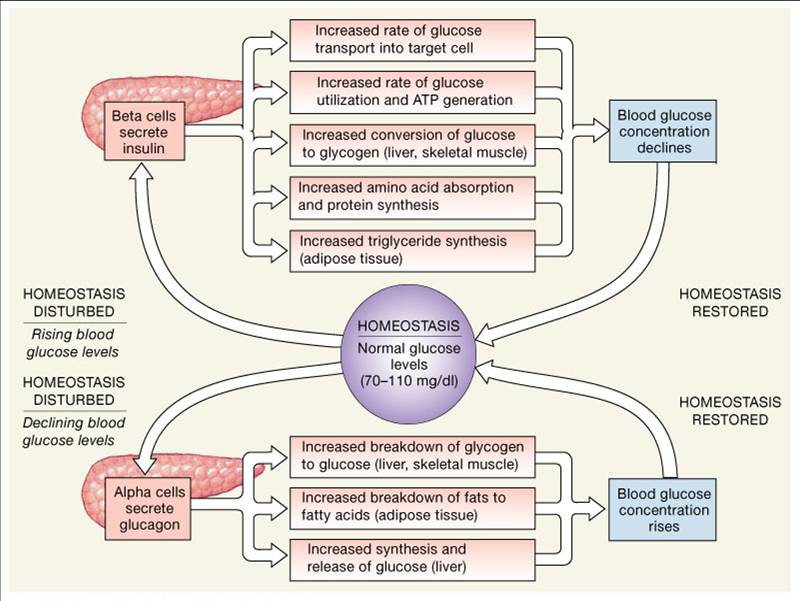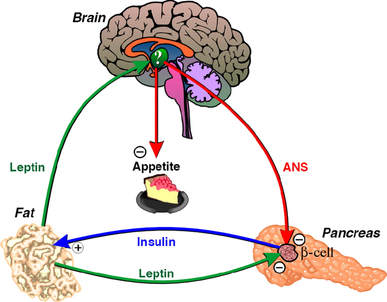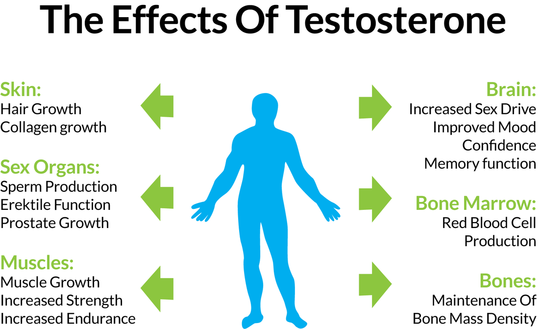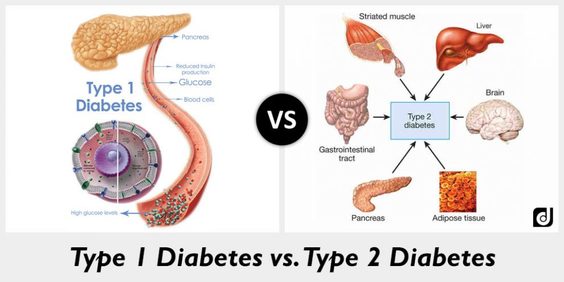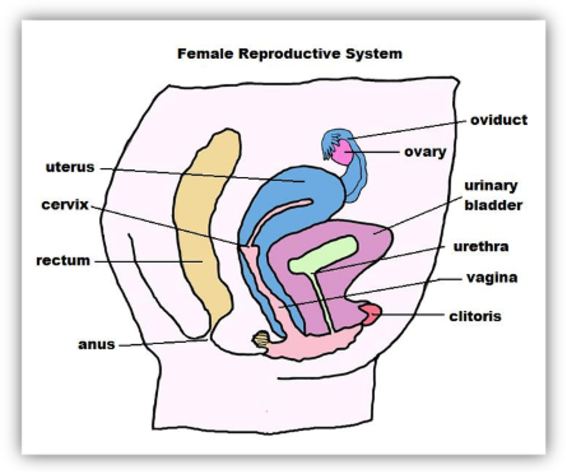topic 6.6: Hormones, Homeostasis and reproduction

In the unit of Hormones, Homeostasis and Reproduction we will learn how the internal environment of the body must remain constant despite changes that occur in the external environment. Hormones are used in feedback mechanism to help control this environment. We will look at how these hormones can control blood glucose, our metabolic rate, our body temperature, our appetite and sleep cycles. We will also look at how hormones are used in reproduction.
This unit will last 4 school days.
This unit will last 4 school days.
Essential idea:
- Hormones are used when signals need to be widely distributed. 6.6
Nature of science:
- Developments in scientific research follow improvements in apparatus—William Harvey was hampered in his observational research into reproduction by lack of equipment. The microscope was invented 17 years after his death. (1.8)
- Describe what Harvey was and was not able to observe in his reproduction research given the tools available at the time.
- Describe what Harvey was and was not able to observe in his reproduction research given the tools available at the time.
Understandings:
6.6.U1 Insulin and glucagon are secreted by β and α cells of the pancreas respectively to control blood glucose concentration.(Oxford Biology Course Companion page 329)
- Explain the control of blood glucose concentration, including the roles of glucagon, insulin and the alpha and beta cells in the pancreatic islets.
The body needs glucose to make ATP (via cell respiration), however the amount required will fluctuate according to demand. High levels of glucose in the blood can damage cells (creates hypertonicity) and hence glucose levels must be regulated
- Blood glucose concentration is carefully monitored by negative feedback mechanisms.
- Cellular respiration is constantly lowering blood glucose levels.
- Receptors in the pancreas sense when the blood glucose level is too low.
- Alpha (α) cells in the islets of Langerhans in the pancreas secrete glucagon into the bloodstream.
- Glucagon stimulates the liver to breakdown stored glycogen into glucose which is released into the bloodstream.
- Blood glucose levels rise back to their normal limits.
- After a person eats, digestion breaks large carbohydrates into glucose molecules.
- Glucose levels rise in the blood.
- If the glucose levels get too high, receptors sense the increased glucose levels causing the pancreas to secrete insulin by the Beta cells (β) of the islets Langerhans.
- Insulin stimulates the absorption of glucose from the blood into skeletal muscles and fat tissue, and thus allowing the liver to convert glucose into glycogen (animal carbohydrate storage molecule).
- Glucose levels decrease back to the normal range.
6.6.U2 Thyroxin is secreted by the thyroid gland to regulate the metabolic rate and help control body temperature. (Oxford Biology Course Companion page 331)
- Describe the structure and function of thyroxin.
- Outline thyroxin’s role in body temperature regulation.
- List symptoms of thyroxin deficiency.
Thyroxin is a hormone secreted by the thyroid gland of the endocrine system
- Thyroxin contains iodine; therefore, prolonged deficiency to iodine in the diet prevents the production of thyroxin
- Thyroxin is important in the regulation of the body’s metabolic rate
- The body’s metabolic rate is the amount of energy a body uses at rest; combination of the catabolic and anabolic reactions
- Since thyroxin causes an increase in the body’s metabolic rate, there is an increase in oxygen consumption and the hydrolysis of ATP; thereby causing an increase in the body’s temperature
- Increase in thyroxin stimulates the breakdown of lipids and the oxidation of fatty acids
- Thyroxin also stimulates carbohydrate metabolism, including the uptake of glucose and the breakdown of glycogen into free glucose
- In a regular person, if the bodies temperature drops, a release in thyroxin will stimulate heat production causing the body’s temperature to rise
- If there is an excessive amount of thyroxin in the body, hyperthyroidism can occur
- If there is an insufficient amount of thyroxin in the body, hypothyroidism can occur
- Some of the symptoms of hypothyroidism are weight gain, loss of energy, feeling cold all the time, forgetfulness and depression
6.6.U3 Leptin is secreted by cells in adipose tissue and acts on the hypothalamus of the brain to inhibit appetite. (Oxford Biology Course Companion page 332).
- State that leptin is a protein hormone.
- Outline the mechanism of action of leptin.
- Describe the role and discovery of the ob allele in obese mice
Leptin is a hormone made by adipose cells that helps to regulate energy balance by inhibiting hunger. Leptin acts on the receptors in the arcuate nucleus (collection of neurons) of the hypothalamus to regulate appetite in order to achieve energy homeostasis The concentration of leptin in the blood is controlled by food intake and the amount of adipose tissue in the body
If the amount of adipose tissue in an individual increases, then their concentrations of leptin also increases, leading to long term suppression of appetite and reduced food intake
In obese individuals a decreased sensitivity to leptin can occur, resulting in an inability the recognize when they are full
If the amount of adipose tissue in an individual increases, then their concentrations of leptin also increases, leading to long term suppression of appetite and reduced food intake
In obese individuals a decreased sensitivity to leptin can occur, resulting in an inability the recognize when they are full
6.6.U4 Melatonin is secreted by the pineal gland to control circadian rhythms. (Oxford Biology Course Companion page 333)
- Define circadian rhythm.
- Describe the secretion and action of melatonin.
- Outline the mechanism that regulates melatonin secretion in response to the day-night cycle.
Melatonin is a hormone produced by the pineal gland within the brain in response to changes in light
- The secretion of melatonin by the pineal gland is controlled by cells in the hypothalamus
- Light exposure to the retina is relayed to the suprachiasmatic nucleus (SCN) of the hypothalamus. These fibers from the hypothalamus relay a message to the nerve ganglia of the spinal cord which is relayed back to the pineal gland to release melatonin.
- Melatonin helps control your sleep and wake cycles (circadian rhythms).
- Very small amounts of melatonin are found in foods such as meats, grains, fruits, and vegetables.
- An internal 24- hour clock controls your natural cycle of sleeping and waking hours.
- Melatonin levels generally begin to rise in the mid to late evening, remaining high for most of the night, and then drop in the early morning hours.
- Light from the sun can also affect how much melatonin your body produces. During the shorter days of the winter months, your body may produce melatonin either earlier or later in the day than usual. This change can lead to symptoms of seasonal affective disorder (SAD), or winter depression.
- Natural melatonin levels slowly drop with age. Some older adults make very small amounts of it or none at all.
6.6.U5 A gene on the Y chromosome causes embryonic gonads to develop as testes and secrete testosterone. (Oxford Biology Course Companion page 334).
- Describe the mechanism by which the SRY gene regulates embryonic gonad development.
Humans have 46 chromosomes in all diploid somatic cells – 22 pairs are autosomes and the 23rd pair are the sex chromosomes.
- Females possess two copies of the X chromosome (XX), while males possess one X and a shorter Y chromosome (XY)
- The Y chromosome (small one below) has a gene called the SRY gene that causes the embryonic gonads to become testes and begin secreting testosterone
- SRY codes for a protein called TDF (testis-determining factor) that stimulates the expression of other genes located on the Y chromosome that cause testis development
- If there are two X chromosomes, the gonads develop as ovaries
6.6.U6 Testosterone causes pre-natal development of male genitalia and both sperm production and development of male secondary sexual characteristics during puberty. (Oxford Biology Course Companion page 334).
- Outline role of testosterone in prenatal development of male genitalia.
- State testosterone's role in stimulating the primary sexual characteristic of males.
- List secondary sexual characteristics triggered by testosterone at puberty.
The main male reproductive hormone is testosterone, which is secreted by the testes and serves a number of roles:
- Secreted in the testes of males or the early stage testosterone-secreting cells that will become testes.
- Aid in the development and maturation of the male genitalia as a fetus at about the 8th to 9th week.
- During puberty, testosterone aids in the development of male secondary sexual characteristics such as pubic and facial hair, enlarged penis, broad shoulders, muscle mass, deepening of voice and bone density.
- Stimulates production of sperm and promotes the male libido (sex drive).
6.6.U7 Estrogen and progesterone cause pre-natal development of female reproductive organs and female secondary sexual characteristics during puberty. (Oxford Biology Course Companion page 335).
- State the sources of estrogen and progesterone used in embryonic development.
- Describe prenatal development of female reproductive organs.
- List secondary sexual characteristics triggered by estrogen and progesterone at puberty.
The main female reproductive hormones (secreted by the ovaries) are estrogen and progesterone, which serve several roles:
- If the SRY gene on the Y chromosome is not present in the embryo, the gonads develop into ovaries
- Estrogen and progesterone which are secreted by the mother’s ovaries and then by the placenta, will cause the female reproductive organs to develop in the absence of testosterone
- During puberty, estrogen and progesterone cause the development of secondary sexual characteristics in females, including breast development, menstrual cycle and pubic and armpit hair
6.6.U8 The menstrual cycle is controlled by negative and positive feedback mechanisms involving ovarian and pituitary hormones [The roles of FSH, LH, estrogen and progesterone in the menstrual cycle are expected.] (Oxford Biology Course Companion page 336).
- Outline events occurring during the follicular and luteal phases of the menstrual cycle.
- State the source and location of action of hormones in the menstrual cycle, including FSH (follicle stimulating hormone), LH (luteinising hormone), estrogen and progesterone.
- Outline the role of hormones in the menstrual cycle, including FSH (follicle stimulating hormone), LH (luteinising hormone), estrogen and progesterone.
- Describe the negative feedback loops that regulates secretion of FSH.
- Describe the positive feedback loop that regulates secretion of estrogen.
- Annotate a graph showing hormone levels in the menstrual cycle, illustrating the relationship between changes in hormone levels and follicular development, ovulation, changes to the corpus luteum, menstruation and the thickening of the endometrium.
The menstrual cycle describes recurring changes that occur within the female reproductive system to make pregnancy possible
FSH (Follicle stimulating hormone)
LH (luteinizing hormone)
Estrogen
Progesterone
FSH (Follicle stimulating hormone)
- Produced and secreted by the anterior pituitary gland.
- Stimulates the growth of the follicles in the ovaries to create a mature Graafian follicle.
- Promotes the thickening of the follicle wall.
- Stimulates the secretion of the hormone estrogen.
LH (luteinizing hormone)
- Produced and secreted by the anterior pituitary gland.
- Triggers the release of the egg (ovulation).
- Stimulates the growth of the corpus luteum (secretes estrogen and progesterone).
- Stimulates the secretion of hormone estrogen and progesterone.
Estrogen
- Produced by the developing follicles in the ovaries and the corpus luteum.
- Promotes the thickening of the uterine wall (endometrium) and the growth of blood vessels, in preparation of egg implantation.
- Inhibits FSH and LH when the estrogen levels are high (around same time as ovulation). This would prevent the development and release of another egg.
Progesterone
- Produced by the ovaries and the corpus luteum.
- Helps maintain the thickening of the uterine wall for egg implantation.
- Inhibit the production of FSH and LH.
Application
6.6.A1 Causes and treatment of Type I and Type II diabetes. (Oxford Biology Course Companion page 330)
- Distinguish between causes of type I and type II diabetes.
- Distinguish between treatment of type I and type II diabetes.
Diabetes is having increased effect on human societies around the world, including personal suffering due to ill health and diabetes directly but also side effects such as kidney failure, eye problems, skin sores and infection. Table 1 distinguishes between type I and type II diabetes.
6.6.A2 Testing of leptin on patients with clinical obesity and reasons for the failure to control the disease. (Oxford Biology Course Companion page 332).
- Explain the double blind study that tested the effect of leptin treatment on human obesity.
- Outline role of leptin resistance in human obesity.
The discovery of how mice become obese because of the lack of the hormone leptin and the subsequent treatment of the mice with leptin injections, led to human trials to decrease obesity. However, trials with humans have had mixed response since the physiology of humans is much different then mice.
Since most humans have quite a high leptin concentration, it was determined that the many of obesity cases where caused by a change in the receptor protein for leptin, not in the production of leptin. A double blind study was conducted by the biotech company Amgen, showed that injections of leptin to many of these individuals, since their receptors didn’t work, failed to control obesity. In individuals that experienced weight loss, there was a big discrepancy in the amount of weight that was lost. There also were other side effects such as skin irritation and swelling.
Since most humans have quite a high leptin concentration, it was determined that the many of obesity cases where caused by a change in the receptor protein for leptin, not in the production of leptin. A double blind study was conducted by the biotech company Amgen, showed that injections of leptin to many of these individuals, since their receptors didn’t work, failed to control obesity. In individuals that experienced weight loss, there was a big discrepancy in the amount of weight that was lost. There also were other side effects such as skin irritation and swelling.
6.6.A3 Causes of jet lag and use of melatonin to alleviate it.(Oxford Biology Course Companion page 334).
- State symptoms of jet lag.
- Outline the biological cause of jet lag.
- Describe use of melatonin in treatment for jet lag.
The SCN of the hypothalamus and the pineal gland continual set the circadian rhythm of the place the person is departing from. Therefore, when a person lands in a country that is many time zones different than the origin, they feel sleepy in the day and awake at night
Jet lag will only last a few days, as the body adjusts to the new times when the light is detected by the cells in the retina during a different time period
Jet lag will only last a few days, as the body adjusts to the new times when the light is detected by the cells in the retina during a different time period
6.6.A4 The use in IVF of drugs to suspend the normal secretion of hormones, followed by the use of artificial doses of hormones to induce superovulation and establish a pregnancy. (Oxford Biology Course Companion page 339).
- Define in vitro fertilization.
- Outline the process of in vitro fertilisation including down-regulation, superovulation, harvesting, fertilization and implantation.
IVF is the process of fertilization by extracting eggs, retrieving a sperm sample, and then manually combining an egg and sperm in a laboratory dish. The embryo(s) is then transferred to the uterus
- Generally, IVF treatment begins by taking drugs to halt the regular secretion of the hormones FSH and LH. This in turn stops the secretion of progesterone and estrogen and effectively allows the doctor to take control of the timing and egg production of the woman’s ovaries
- The woman is then injected with large amounts of FSH to induce the production of many Graafian follicles.
- LH is also injected to promote the release of many ovules (eggs)
- This is called superovulation, which can produce between 10 and 20 eggs
- The eggs are then stimulated to mature by an injections of HCG (Human Chorionic Gonadotrophin), a hormone usually secreted by the developing embryo
- The eggs are surgically removed from the ovary of the woman.
- Sperm is collected from the male individual.
- Many sperm (50,000-100,000) are mixed with the eggs in a petri dish.
- The sperm and eggs in the petri dish are incubated at 37ºC (body temperature).
- The eggs are analyzed for successful fertilization (two nuclei inside the egg).
- Healthy embryos are selected and are transferred into the female uterus for implantation (up to 3 healthy embryos are transferred into the uterus to increase chance of implantation).
6.6.A5 William Harvey’s investigation of sexual reproduction in deer. [William Harvey failed to solve the mystery of sexual reproduction because effective microscopes were not available when he was working, so fusion of gametes and subsequent embryo development remained undiscovered.]
- Outline Harvey's methods of studying reproduction.
- State Harvey's discovery about reproduction.
William Harvey was best known for his discovery of the circulation of the blood, also was interested in sexual reproduction and how life is formed.
Aristotle’s theory was called the seed and soil theory, which stated that the male produces a seed (sperm) which then forms an egg when it mixes with menstrual blood of the mother. The egg then develops into a fetus inside the mother and eventually “voila” you have a baby
Harvey studied the uterus of the deer during mating season by killing them and then dissecting them expecting to find eggs; however, Harvey only found signs of fetal development 2 to 3 months after mating season. He concluded that Aristotle’s theory of seed and soil was incorrect, but then he was also incorrect in stating that the fetus doesn’t come from the mixture of the male and female seeds. He knew he had not come up with the correct method of sexual reproduction
Aristotle’s theory was called the seed and soil theory, which stated that the male produces a seed (sperm) which then forms an egg when it mixes with menstrual blood of the mother. The egg then develops into a fetus inside the mother and eventually “voila” you have a baby
Harvey studied the uterus of the deer during mating season by killing them and then dissecting them expecting to find eggs; however, Harvey only found signs of fetal development 2 to 3 months after mating season. He concluded that Aristotle’s theory of seed and soil was incorrect, but then he was also incorrect in stating that the fetus doesn’t come from the mixture of the male and female seeds. He knew he had not come up with the correct method of sexual reproduction
Skill
6.6.S1 Annotate diagrams of the male and female reproductive system to show names of structures and their functions. (Oxford Biology Course Companion page 335).
- Label a diagram of the male reproductive system, including the bladder, sperm duct, penis (with foreskin and erectile tissue), urethra, testis, scrotum, epididymis, prostate gland and seminal vesicle.
- Outline the function of the following male reproductive structures: testis, scrotum, epididymis, sperm duct, seminal vesicle, prostate gland, urethra and penis.
- Label a diagram of the female reproductive system, including the ovary, uterus, bladder, urethra, vulva, vagina, cervix and oviduct.
- Outline the function of the following female reproductive structures: ovary, oviduct, uterus, cervix, vagina, and vulva.
Key Terms:
|
negative feedback
positive feedback insulin alpha cells beta cells glucagon glycogen endocrine superovulation uterus endometrium menstrual cycle IVF pancreatic islets embryonic gonad erectile tissue |
propagation
pancrease pineal gland pituitary thryoid pancreas ovaries testes fertilization cervix Leydig cells FSH ovulation hormone therapy pre-natal prostate gland oviduct |
hypothalamus
seminal vesicle exocrine thyroxin leptin melatonin endometrium follicles LH oestrogen implantation adipose tissue puberty follicular phase luteal phases sperm duct vagina ovarian |
endocrine
gland penis testis epididymis scrotum vas deferens scrotum XX corpus luteum oocyte progesterone inhibit appetite circadian rhythms genitalia urethra vulva ovulation |
hormone
target homeostasis blood glucose thermoregulation diabetes vasodilation vasoconstriction XY puberty William Harvey gonadotrophin ob allele testosterone obesity jet lag cervix |
Class Materials:
Hormones
Hormones and Homeostasis unit notes packet
Endocrine system and hormone action notes
Homeostasis
Homeostaisis Webquest
Homeostasis posters
Thermoregulation notes
Reproduction
Male and Female Reproduction worksheet
Male and Female Hormones Concept Map
Topic 6.6 Review
Hormones
Hormones and Homeostasis unit notes packet
Endocrine system and hormone action notes
Homeostasis
Homeostaisis Webquest
Homeostasis posters
Thermoregulation notes
Reproduction
Male and Female Reproduction worksheet
Male and Female Hormones Concept Map
Topic 6.6 Review
Your browser does not support viewing this document. Click here to download the document.
Your browser does not support viewing this document. Click here to download the document.
Correct use of terminology is a key skill in Biology. It is essential to use key terms correctly when communicating your understanding, particularly in assessments. Use the quizlet flashcards or other tools such as learn, scatter, space race, speller and test to help you master the vocabulary.
External Links:
The Endocrine System
Really good animation – lots of info – from e-learning for kids
McGraw Hill: Hormonal Communication animation
Homeostasis
Tutorial and game from think-bank
Detailed tutorial from the University of New South Wales
Homeostasis in Newfoundland from Memorial University
Another good Freeman tutorial
Blood Glucose and Diabetes
MedMovie introduction
WebMD guide to diabetes
McGraw Hill: Blood glucose regulation in diabetes
Reproduction
Female Reproductive System
ICT in IB Biology: Menstrual Cycle Hormones
Spermatogensis by McGraw Hill
IVF Animation
McGraw Hill Mentral Cycle Positive and Negative Feedback
And some BioEthics cases on IVF:
Australasian bioethics special: IVF
Vatican condemns IVF
Journal of Medical Ethics: State of the Debate
Octomom signs reality TV deal
The seedy side of sperm-banks – low regulation leads to one father with 150 kids.
- Cause of pre-eclampsia discovered (link to enzymes and inhibition), from The Guardian
- A cartoon post on how the pill works, from Beatrice the Biologist.
- How the inventor of the pill changed the world for women, from the Guardian.
- Putting numbers into context, regarding success rates of IUDs, from BadScience.
- Great 3D Pregnancy calendar and loads of resources on being and getting pregnant, from ParentsConnect
- And another one from BabyCentre.com.
In the News:
New Controversy Over Experimental IVF Method
(2013-09-17)Insect gene expression responds to diet from BrightSurf
Mystery kidney illness kills thousands in South America, from AP.
12 Myths about Diabetes and Insulin
New Controversy Over Experimental IVF Method
(2013-09-17)
Video Clips:
Explore homeostasis with the Amoeba Sisters and learn how homeostasis relates to feedback in the human body. This video gives examples of negative feedback (temperature and blood glucose regulation) and positive feedback (events in childbirth).
Hank fills us in on the endocrine system - the system of glands which produce and secrete different types of hormones directly into the bloodstream to regulate the body's growth, metabolism, and sexual development & function.
Hank begins teaching you about your endocrine system by explaining how it uses glands to produce hormones. These hormones are either amino-acid based and water soluble, or steroidal and lipid-soluble, and may target many types of cells or just turn on specific ones
In the second half of our look at the endocrine system, Hank discusses chemical homeostasis and hormone cascades. Specifically, he looks at the hypothalamus-pituitary-thyroid axis, or HPT axis, and all the ways your body can suffer when that system, or your hormones in general, get out of whack.
Emma Bryce explains how the thyroid, like the operations manager in a company, is tasked with making sure that all the cells in your body are working properly.
Beneath your ribs, you’ll find, among other things, the pancreas -- an organ that works a lot like a personal health coach. Emma Bryce explains how this organ controls your sugar levels and produces a special juice that releases the nutrients from your food to help keep you in the best possible shape.
Diabetes has a history dating back to Ancient Greece. Our treatment of it, however, is more recent and was originally made possible with the help of man's best friend. Due to physiological traits shared with humans, dogs have saved countless lives through the discovery of insulin. Duncan C. Ferguson shares the story of the canine's great contribution to man -- and how we can all reap the medical benefits.
Hanger is the grumpiness you feel when you are hungry. We've all been there, but what's the science behind it?
Why do we sleep at night instead of during the day? In this episode of SciShow Hank talks about circadian rhythms, how they work, and how they regulate different processes in our bodies.
Learn how your biological clock or circadian rhythm tunes physiology, metabolism and brain function. Dr. Satchin Panda's research shows thousands of genes in every cell turn on and off at specific times of the day. This gene orchestra dictates the optimum times for everything from athletic performance, shaving, taking medicine to cramming for an exam
Cool music video from the Stanford students- The Lion, the Watch and the Hormones
Hank lets us in on the meaning of life, at least from a biological perspective - it's reproduction, which answers the essential question of all organisms: how do I make more of myself? So, sex, how does it work?
Hank fills us in on the endocrine system - the system of glands which produce and secrete different types of hormones directly into the bloodstream to regulate the body's growth, metabolism, and sexual development & function
At this moment, three hundred million women across the planet are experiencing the same thing: a period. The monthly menstrual cycle that gives rise to the period is a reality that most women on Earth will go through in their lives. But why is this cycle so universal? And what makes it a cycle in the first place? Emma Bryce gives a primer on periods
Infertility affects 1 in 8 couples worldwide. But in the last 40 years, more than 5 million babies have been born using in vitro fertilization (IVF). How does it work? Nassim Assefi and Brian A. Levine detail the science behind making a baby in a lab.
Having too much of each used to be the source of all your health problems...or so people thought, until William Harvey came on the scene and blew those ideas to smithereens. All but forgotten now, Harvey was a trailblazer, fighting against 1500 years of established scientific dogma, virtually by himself. He ruffled a lot of feathers, but eventually became a major influence on modern medicine. Remember the work of one of history's greatest Misunderstood Geniuses in this short video.
